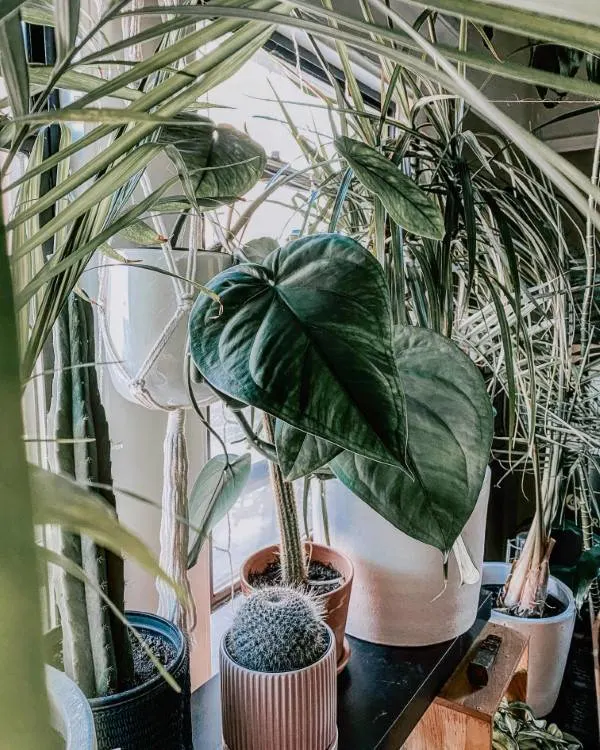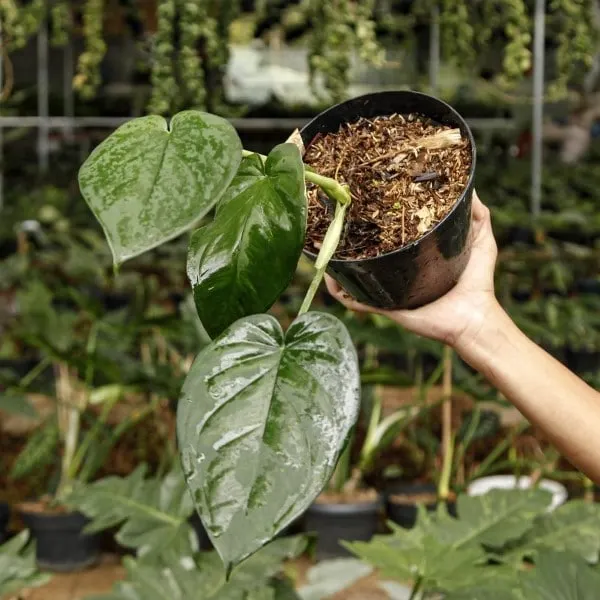Home gardening is an extremely rewarding discipline that is appreciated everywhere around the world. Something about watching your plants grow to their fullest potential just feels incredibly satisfying and rewarding.
Gardening is not as easy as it looks though, depending on the species of the plant(s) you’re taking care of, gardening can be equally demanding and draining.
This usually happens when you own different species of plants but have little to no awareness on how to provide them with their individual needs.
Don’t fret though; we’re here to help you with just that. Aroid collectors are in for a treat. In this article, we will share our top caring tips for the care of a Syngonium Chiapense plant and then, we will look at the correct way you can propagate this plant inside your home.

A brief introduction to the syngonium chiapense
A home gardener can never be prepared to parent a plant inside their home unless they have some information about what species the plant belongs to and what region it is native to. having a rudimentary level understanding of your garden plants can prove essential for their survival.
In this section, we will give you a brief understanding of a Syngonium Chiapense plant.
The Syngonium Chiapense stands out from the usual crowd of Syngonium plants. This is because the plant resembles philodendron plants so much that Its no surprise that people often end up confusing it for a philodendron.
This plant is native to Mexico and can reach up to 70cm in length. The Synogonium Chiapense is a climbing plant. This means that when it is planted in home gardens, it is common practice to install a wet wall or a totem near it so that it may climb on it and add beauty to your home garden.
The Syngonium Chiapense boasts stunning lush green leaves. The leaves are found in two main varieties of shapes: rounded or heart shaped.
The leaves have a rubbery and glossy texture, which means that the plant looks absolutely stunning when it is kept clean. Luckily, its contribution to your garden’s aesthetics will not cost you much time, money, and effort.
The Syngonium chiapense plant is known for its easygoing/ low maintenance nature. A word of caution, though. The Syngonium Chiapense plant is not pet friendly.
The plant is a bit toxic, so if you own pets that are in a habit of biting things here and there, we recommend you do not get this plant for your house.
Syngonium Chiapense – Top 4 tips on how to care for it
Now that we know a bit about the Syngonium Chiapense plant, we are ready to have a discussion on its caring methods. If you’re new to gardening, you should know that taking care of plants is more than just giving them water and putting them in sunlight.
In fact, in many cases, if you water your plant (or put it in sunlight) without being aware of the species’ requirements, you will end up killing the plant.
When over watered, most plants rot from their roots and eventually die away and when directly kept under a blazing sun, most plants will burn up (their leaves will dry up) and die.
While the Syngonium Chiapense is relatively low maintenance, we strongly advice you to still read through this section carefully. Even the most self-sustaining of plants have essential survival needs.
Water
Watering is perhaps the most important aspect of a plant’s care. For your Syngonium Chiapense, the recommended watering method is to first allow one-fourth of an inch of the topmost layer of soil go dry.
You can check the soils dryness by using your fingers and seeing if you can detect any signs of moisture.
The safest play is to start by watering your plant once a week and then adjusting your frequency according to how quickly your soil dries up.
This trial-&-error method is recommended because each region has different environmental temperatures, humidity levels, lighting etc. this causes the rate at which the soil dries up to differ from region to region.
This method should get you to the perfect watering rate. Also, make sure you do not over- (or under-) water your plant. Extreme levels of watering will kill your Syngonium Chiapense

Lighting
The Syngonium Chiapense plant thrives inhigh light levels of moderate intensity. Don’t go so far as keeping it directly under the sun for too long. It is far better for you to keep it somewhere it can receive bright indirect sunlight.
One way to do this, for those of you who wish to grow this plant in doors, is to keep your plant in front of a large window but make sure the window is covered by a curtain. This should help give the plant bright indirect sunlight.
Fertilizers
A monthly dose of slow- release fertilizer works best with this plant
Container
For its initial growth stages, a 6-inch container (6 inches wide with holes in the bottom which assist drainage) should do just fine. But one your plant starts getting older, you should promptly repot it in larger containers.
Propagating a Syngonium Chiapense plant
You’re in luck if you want to learn how to propagate this plant. The syngonium chiapense is one of the easiest plants to propagate indoors. Simply follow the steps outlined below:
Cut a few inches off of an existing Chiapense plant but make sure your stem cutting contains nodes and a few leaves. Place this cutting in water inside a container.
Next, follow the caring tips we spoke about in the previous section and place your plant in a suitable soil mix. Your plant should be ready in no time.
A Quick Summary
The Syngonium Chiapense is a stunning lush green plant that looks stunning indoors. The plant is toxic to pets, so its best not to get it if you have pets in your house.
Taking care of this plant is extremely easy, all you need to do is water it weekly when the soil dries out, fertilize it monthly with the use of slow-release fertilizers and expose it to indirect bright light.
The propagation for this plant is also pretty simple, all you need to do is take a stem cutting with nodes and leaves, place it in water inside a container and then after some time, shift it to a suitable soil mix.
